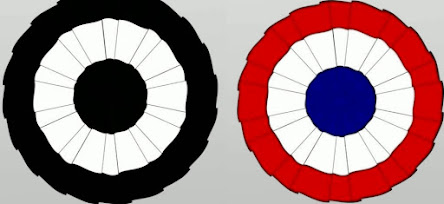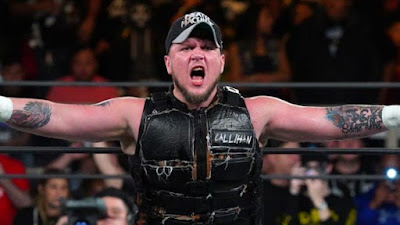Intro:
Hello and welcome to another edition of the presidential election articles and today will be focusing on the 1796 election as George Washington is leaving after two terms and the political parties that have been forming along the way are now looking to see who will led the country as president...let's get into it.
Background Info
After two success terms as president, George Washington gives his famous farewell address as he steps down from his position leading to the first ever contested election in American history and over the course of Washington's time in office, the storm clouds of partisanship and political parties have been forming around Washington despite his warnings against them.
By 1796, the Federalist Party and the Democratic Republicans have been building themselves up for this moment to see who will be the man to take Washington's place as POTUS and the field is full of contenders on both sides.
So now, let's talk about the two parties involved in this election and the candidates who represent them.
Federalists Candidates
From much of Washington's two terms, the Federalist Party who believe in things like a strong federal government and economic growth through things like a national bank have been spreading their influence all over the country from the late 1780's to early 1790's thanks in large part to Alexander Hamilton and Vice President John Adams.
While the candidates running for president in this election belonged to either the Federalists or Democratic Republicans, they were pretty much running on their own but the plan was to run multiple candidates on each side to prevent the other party from possibly winning the presidency and vice presidency.
The candidates running for the Presidency and Vice Presidency on the Federalists side are:
- John Adams: Washington's Vice President from Massachusetts
- Charles Pinckney: The U.S. Minster of France From South Carolina
- Samuel Johnston: Former Senator From North Carolina
- John Jay: The Governor of New York
- Oliver Ellsworth: The Chief Justice of the Supreme Court from Connecticut
- Thomas Pinckney: The Governor of South Carolina
- James Irdell: Associate Justice from North Carolina
Now let's take a look at the Democratic Republicans...
Democratic Republican Candidates
So, by 1792 former Federalist, James Madison and Washington's Secretary of State, Thomas Jefferson created a party out of a group of Anti-Federalists and they would be called Democratic Republicans (no relation to the two major parties of today).
Unlike the Federalists, the Democratic Republicans believe that the government should have a limited role in power, opposing the idea of a national bank but also believing in the ideas of expansionism, agrarianism aka small farming and supporting the French Revolution is which occurred in 1792.
Now as you might remember from the previous article I did on the election of 1792, Thomas Jefferson was going to run for the Vice Presidency but due to an issue in the constitution (wouldn't be the last time I'll be saying that) voters couldn't elect two people who come from the same place as both Jefferson and Washington hail from Virgina, so Jefferson wasn't able to unseat John Adams but now that Washington is walking away from the presidency, Thomas Jefferson doesn't need to worry about that in this election.
So, the five candidates running for the presidency and vice presidency for the Democratic Republicans are:
- Thomas Jefferson: The Former Secretary of State
- Aaron Burr: U.S. Senator of New York
- George Clinton: The Former Governor of New York
- Samuel Adams: The Governor of Massachusetts & Cousin of John Adams
- John Henry: U.S. Senator from Maryland
While all of the candidates on both sides were looking to become President and or Vice President, most of their support was towards John Adams and Thomas Jefferson who seemed to be the front runners for their respective parties, but this election is far from clean in fact some mudslinging was going, so let's talk about some the claims being thrown in this election.
Mudslinging Some people might have thought that the elections back in the day was civil, classier and were above the negativity we see in politics today but that simply isn't the case as this election proves.
The Federalists are going to be making claims that the Democratic Republicans are favoring the violence that was going on the French Revolution and also suggesting that Jefferson was too supportive of France and that he was an Atheist (which wouldn't go over well with many voters who are religious).
The Democratic Republicans for their part are claiming that the Federalist were cozying up too much to Great Britain and they are using Jay's Treaty which eased tensions with Britain and the United States to back up those ideas. They are also rallying against the idea of a centralized government and the national bank while proclaiming that the Federalists will turn the U.S. into a monarchy or aristocracy like Britain.
This is certainly a heated contest on both sides but before I reveal the results of the electoral map for this election there's one more piece of the puzzle that needs to be bought in.

Hamilton's Plan
Alexander Hamilton, the former Secretary of the Treasury under Washington and the founder of the Federalist Party had a plan in mind when came to the election of 1796, his plan initially was to deny John Adams the opportunity to become president due to some political issues both men had previously and while they both run under the Federalist banner, Hamilton didn't want to see Adams become the next commander and chief, so he devised a plan.
Hamilton's plan was to persuade enough voters to cast their votes not for Adams but for Jefferson, with the hope that Jefferson would get enough votes to become the vice president thereby denying John Adams the chance to keep his old job.
The other part of that plan was to ensure that Thomas Pinckney got enough votes to become the president since some Democratic Republicans liked Pinckney and felt that he could be the one to keep the two political parties from further dividing themselves and the country as a whole.
In all, this plan would prevent John Adams from winning not only the presidency and vice presidency, but it would also see two opponents from two different political parties working together for the next four years but considering how the Democratic Republicans supported Thomas Jefferson and liked Thomas Pinckney perhaps some mutual understanding and bipartisanship could have been reached.
Well now that we've talked about Hamilton's masterplan for this election, let's look at the results and see if that plan worked but also what repercussions will come out of it.
The Electoral Results and the 12th Amendment
As you can see from the electoral map it's a close one, John Adams picks up the win with 71 electoral votes making Adams the first vice president to become president in U.S. history.
Thomas Jefferson walks away with 68 electoral votes leaving him in second place which means Jefferson is now the vice president which means that Hamilton got his wish...sort of as Jefferson did win the VP spot but not with Thomas Pinckney as the new president.
This now meant that John Adams and Thomas Jefferson will be working to together as POTUS and VP for the next four years and considering the issues between Adams and Jefferson leading into this campaign, this is going to be a disaster of a partnership.
Due the mess that was the result of this election, the 12th Amendment was ratified into the constitution to prevent something like this from happening again, however that ratification wouldn't happen until 1804 so we have time for one more election where the results will be heavily scrutinized.
Speaking of the results, Thomas Pinckney came in third with 59 electoral votes, Aaron Burr came in fourth receiving 30 electoral votes and all the other candidates either got 15 or least votes in fact George Washington himself even got some electoral votes, which just goes to show you how popular he was.
So that was the election of 1796, it was certainly a contest filled with a whole lot of twist and turns and a controversial finish to boot but the issues between John Adams and his vice president, Thomas Jefferson there not going anywhere and if anything, it will continue to get worse as we head in the election of 1800.
The Election Of 1792
Be sure to follow me on Twitter @FullertonHakeem and I will see you later.












Comments
Post a Comment